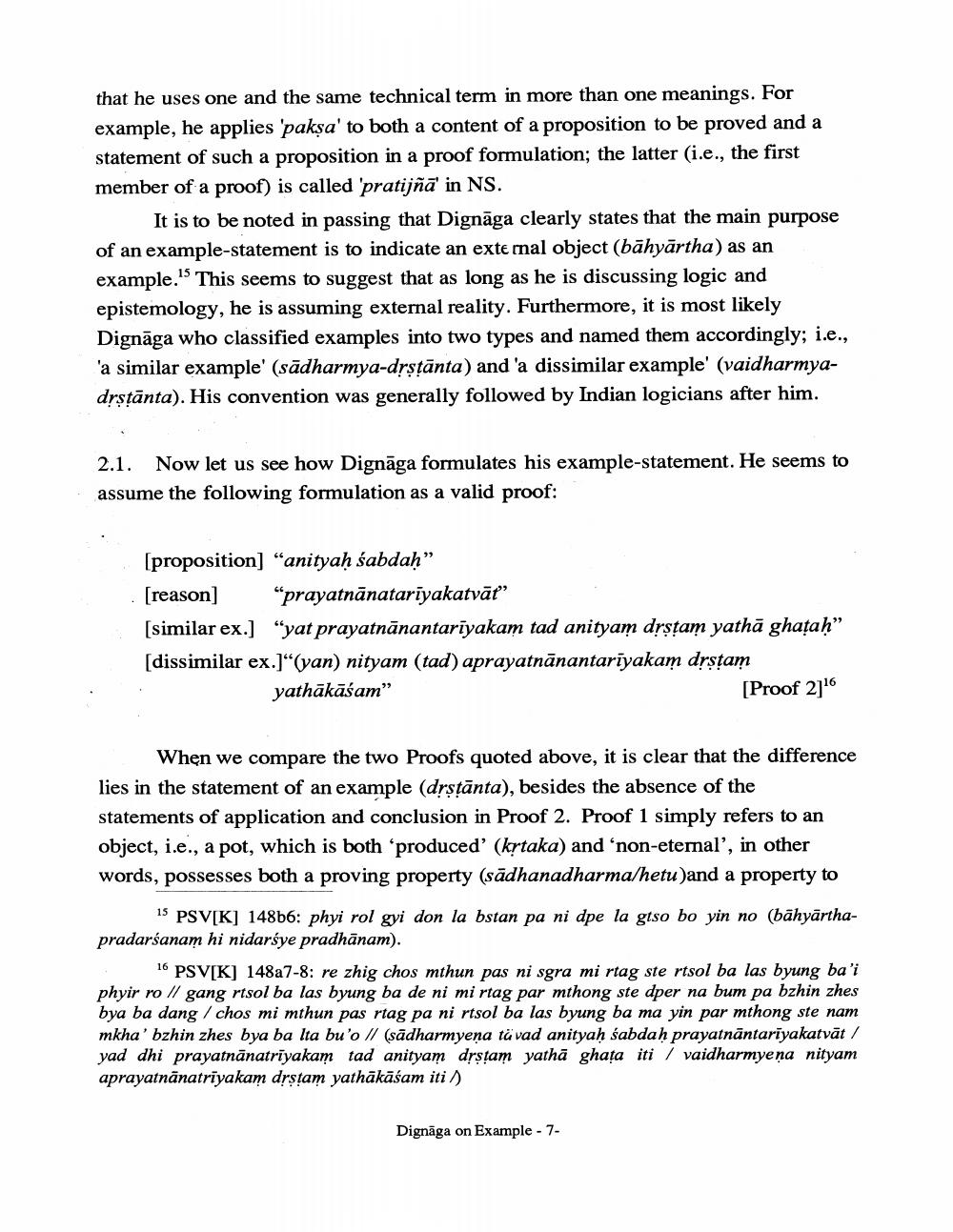Book Title: Role Of Drstanta Indignagas Logic Author(s): Shoryu Katsura Publisher: Shoryu Katsura View full book textPage 7
________________ that he uses one and the same technical term in more than one meanings. For example, he applies 'paksa' to both a content of a proposition to be proved and a statement of such a proposition in a proof formulation; the latter (i.e., the first member of a proof) is called 'pratijñā' in NS. It is to be noted in passing that Dignāga clearly states that the main purpose of an example-statement is to indicate an external object (bāhyārtha) as an example. This seems to suggest that as long as he is discussing logic and epistemology, he is assuming external reality. Furthermore, it is most likely Dignāga who classified examples into two types and named them accordingly; i.e., 'a similar example' (sādharmya-drstānta) and 'a dissimilar example' (vaidharmyadrstānta). His convention was generally followed by Indian logicians after him. 2.1. Now let us see how Dignāga formulates his example-statement. He seems to assume the following formulation as a valid proof: [proposition] “anityaḥ śabdah” [reason] “prayatnānatarīyakatvāť (similar ex.) “yat prayatnānantarīyakam tad anityam drstam yathā ghataḥ” [dissimilar ex.)"(yan) nityam (tad) aprayatnānantarīyakam drstam yathākāśam" [Proof 2116 When we compare the two Proofs quoted above, it is clear that the difference lies in the statement of an example (drstānta), besides the absence of the statements of application and conclusion in Proof 2. Proof 1 simply refers to an object, i.e., a pot, which is both ‘produced' (krtaka) and ‘non-eternal', in other words, possesses both a proving property (sādhanadharma/hetu )and a property to 15 PSV[K] 148b6: phyi rol gyi don la bstan pa ni dpe la gtso bo yin no (bāhyārthapradarśanam hi nidarsye pradhānam). 16 PSV[K] 148a7-8: re zhig chos mthun pas ni sgra mi rtag ste rtsol ba las byung ba'i phyir ro // gang rtsol ba las byung ba de ni mi rtag par mthong ste dper na bum pa bzhin zhes bya ba dang /chos mi mthun pas rtag pa ni rtsol ba las byung ba ma yin par mthong ste nam mkha' bzhin zhes bya ba Ita bu'o // (sādharmyena tävad anityaḥ śabdah prayatnāntariyakatvāt / yad dhi prayatnānatrīyakam tad anityam drstam yathā ghata iti / vaidharmyeņa nityam aprayatnānatriyakam drstam yathākāśam iti :) Dignāga on Example - 7Page Navigation
1 ... 5 6 7 8 9 10 11 12 13 14 15 16 17 18 19 20 21 22 23 24
